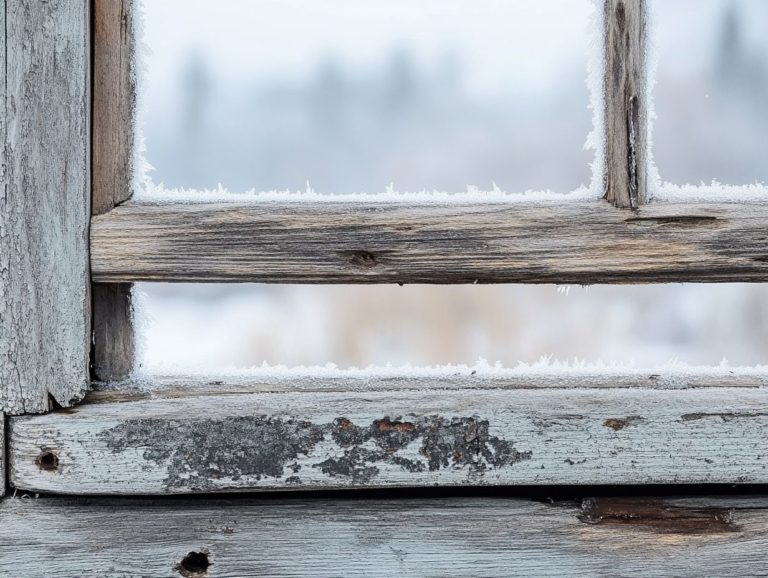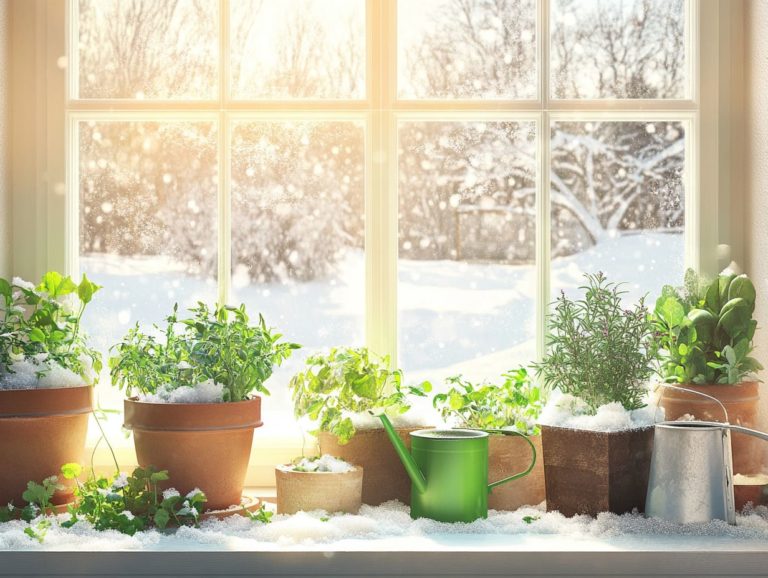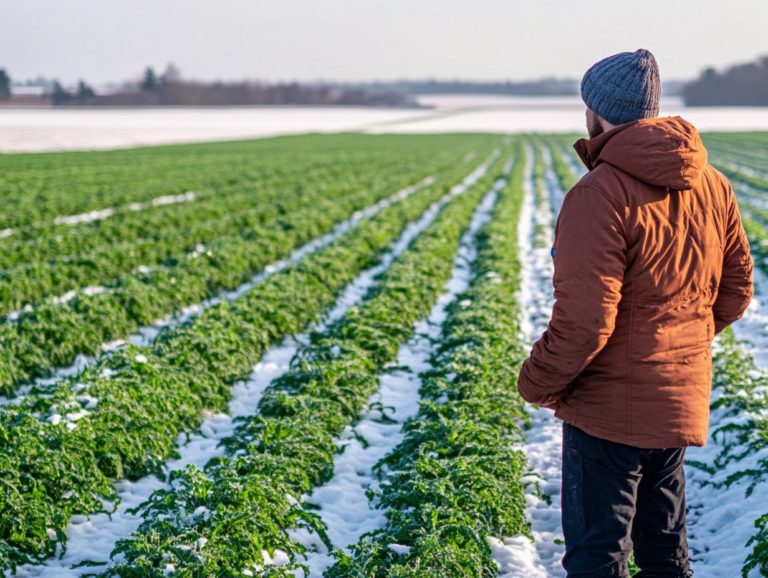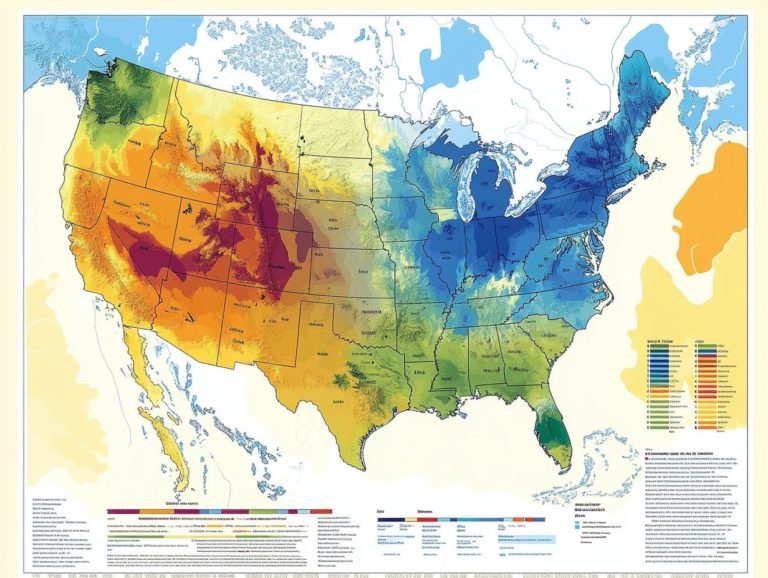Maximizing Sunlight in Your Cold-Climate Garden
Sunlight is the lifeblood of any garden, crucial for nurturing plant growth and maintaining overall health. As a gardener in colder climates, capturing every precious ray is vital, especially with seasonal shifts and the potential shade cast by nearby structures or trees.
This guide explores effective strategies for maximizing sunlight in your garden. You’ll learn about thoughtful plant placement, the use of reflective surfaces, and creating sun traps.
You will also discover alternative solutions for limited sunlight. Get ready to transform your garden into a vibrant oasis!
Contents
- Key Takeaways:
- Why Sunlight is Your Garden’s Best Friend!
- Factors Affecting Sunlight in Cold-Climate Gardens
- Maximizing Sunlight in Your Garden
- Alternative Solutions for Limited Sunlight
- Frequently Asked Questions about local gardening experts
- What are some ways to maximize sunlight in a cold-climate garden, considering frost dates?
- How can reflective materials help to maximize sunlight in a garden, especially for vegetable growing season?
- What types of plants are best for a cold-climate garden with limited sunlight, particularly kale-like vegetables?
- Is it necessary to prune trees or structures that may be casting shade on my garden, especially cottonwood trees?
- Want to boost your garden with artificial lighting? Absolutely! Can I use special lights for plants to supplement sunlight in my cold-climate garden, especially when growing spinach?
- Are there any other factors besides sunlight, such as soil insulation, that can affect plant growth in a cold-climate garden?
Key Takeaways:

- Sunlight is crucial for plant growth. Maximize it for best results!
- Shade from buildings or trees can limit sunlight. Keep this in mind while planning your garden.
- Use reflective surfaces and sun traps. Explore options like artificial lighting and shade-tolerant plants.
Why Sunlight is Your Garden’s Best Friend!
Sunlight is vital for gardening, especially in colder climates like Wyoming, where the growing season is often shorter due to unpredictable weather. Adequate sunlight helps plants make food and promotes strong growth, affecting everything from flowering to fruiting. This is the key to successful gardening!
By mastering how to maximize sunlight, you can achieve bountiful yields and vibrant gardens, even in challenging conditions. For those looking to enhance their gardening skills, maximizing yield is crucial, and local gardening experts often recommend specific seasonal interest plants that thrive in colder zones, ensuring your garden flourishes.
Factors Affecting Sunlight in Cold-Climate Gardens
Several factors can greatly influence sunlight availability in your cold-climate garden, especially in regions like Wyoming, where seasonal changes redefine the gardening landscape. For tips on overcoming winter gardening challenges, it’s important to adapt your strategies accordingly.
The timing of dates when frost occurs plays a crucial role in dictating your planting schedules. Natural elements like trees and buildings can create shade over your garden, limiting the sunlight your plants receive.
Understanding these factors is essential if you aim to maximize yields and grow healthy, thriving plants throughout the season.
Seasonal Changes and Sunlight Availability
Seasonal changes significantly impact sunlight availability in cold-climate gardening, especially in regions like Wyoming, where winters can severely limit sunlight for your plants.
As the year goes on, the sun s position in the sky changes, directly affecting how much light reaches your garden. During winter, short days can mean limited sunlight, making it hard for many plants to thrive.
However, when spring and summer arrive, longer days filled with sunlight provide opportunities to grow a variety of vegetables and flowers that flourish in these conditions. For instance, early spring may see cold-hardy crops like spinach and kale thriving on limited sunlight, while summer supports sun-loving varieties like tomatoes and peppers.
The relationship between seasons and sunlight significantly affects gardening in Wyoming. Understanding these changes is vital for success!
Shade from Buildings or Trees
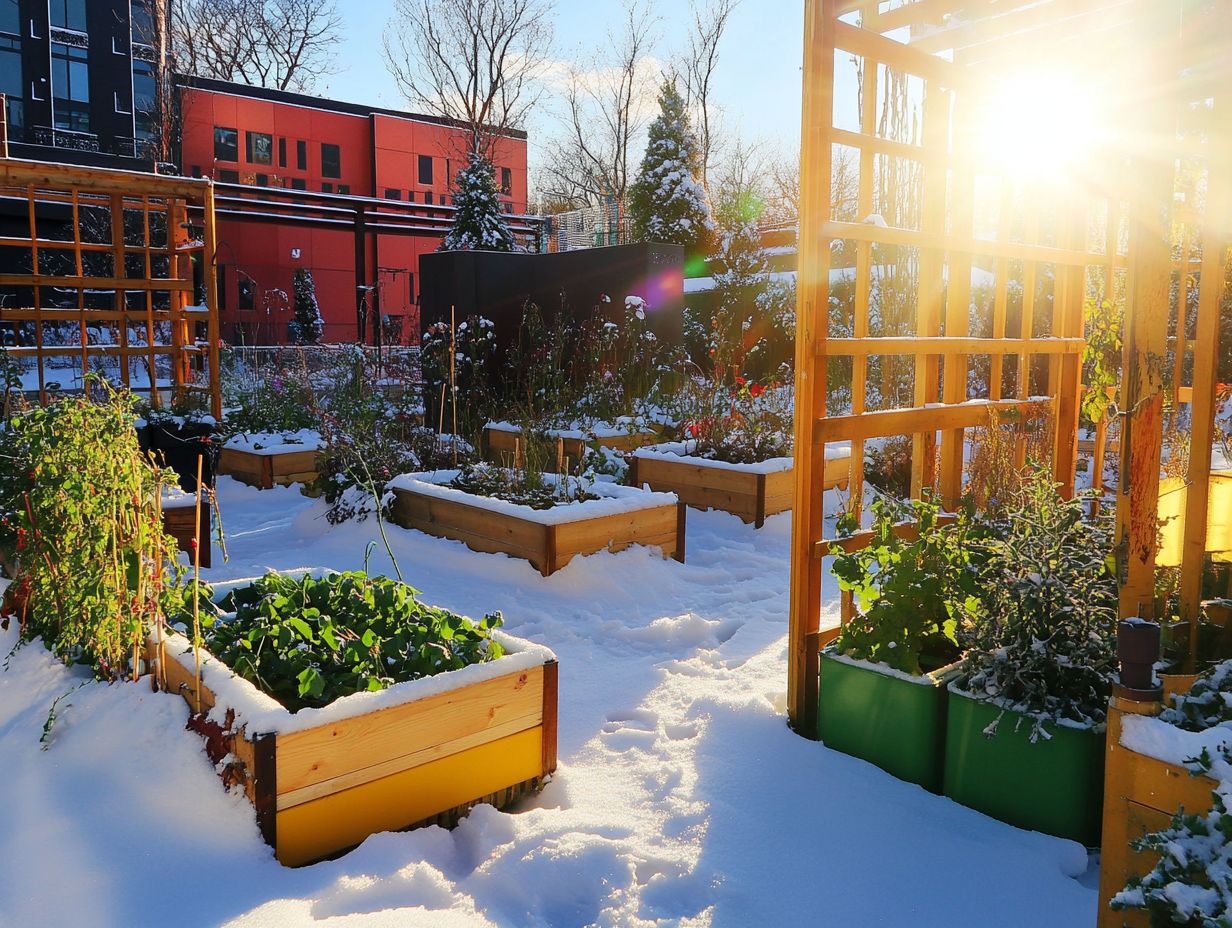
Shade from buildings or trees is a challenge for gardeners who want lush growth.
In cold climates, understanding how shade affects temperature and moisture levels is crucial for your gardening success. Without enough sunlight, your plants may struggle to flourish, leading to sparse blooms and lackluster foliage.
If you re gardening in shaded areas, consider employing strategic planting techniques. Opt for shade-tolerant varieties like hostas and ferns to enhance your garden’s vibrancy, even under low light. Arrange taller plants to allow light to filter through for a balanced ecosystem.
With careful thought and planning, you can transform shade into an opportunity, crafting unique and thriving green spaces in colder climates.
Maximizing Sunlight in Your Garden
Maximizing sunlight in your garden is crucial for successful cultivation, especially when considering the role of sunlight in winter gardening, where every ray matters.
Implement thoughtful strategies, such as placing plants strategically, to enhance their exposure to sunlight, leading to healthier plants and a thriving garden.
Incorporating reflective surfaces and creating sun traps can significantly boost sunlight availability. This enables you to cultivate thriving plants even in regions like Wyoming, where shorter growing seasons are a challenge.
Strategic Plant Placement
Strategic plant placement is essential for maximizing sunlight exposure in cold climate gardening, particularly in challenging environments like Wyoming. For more detailed insights, check out this guide on planning your 2024 garden in cold climates.
To achieve optimal results, engage in thoughtful planning and understand each plant’s specific light requirements. Consider not just the height of your plants, which can cast shadows, but also their spacing to promote airflow and light penetration.
Placing taller plants too closely to shorter varieties risks overshadowing them, stunting their growth. Analyze your garden’s orientation in relation to the sun’s path to arrange plants based on whether they thrive in full sun, partial shade, or dappled sunlight.
By observing how your plants interact with their light needs, you can cultivate a vibrant ecosystem that flourishes amid Wyoming’s unique climatic conditions.
Utilizing Reflective Surfaces
Using reflective surfaces not only brightens your garden but also boosts your plants’ growth!
This strategy elevates the visual appeal of your space and impacts plant growth by directing light to shadowy areas that often get overlooked. Place mirrors strategically to bounce sunlight onto leafy greens that might otherwise struggle to receive adequate light, encouraging healthier growth.
Consider using aluminum foil as a budget-friendly option. Affix it to a backing board to create makeshift reflectors that brighten dark corners. The benefits are remarkable improved yields and vibrant plants showing that even simple materials can harness sunlight to create a flourishing garden environment.
Start planning your garden today to make the most of every ray of sunshine!
Creating Sun Traps
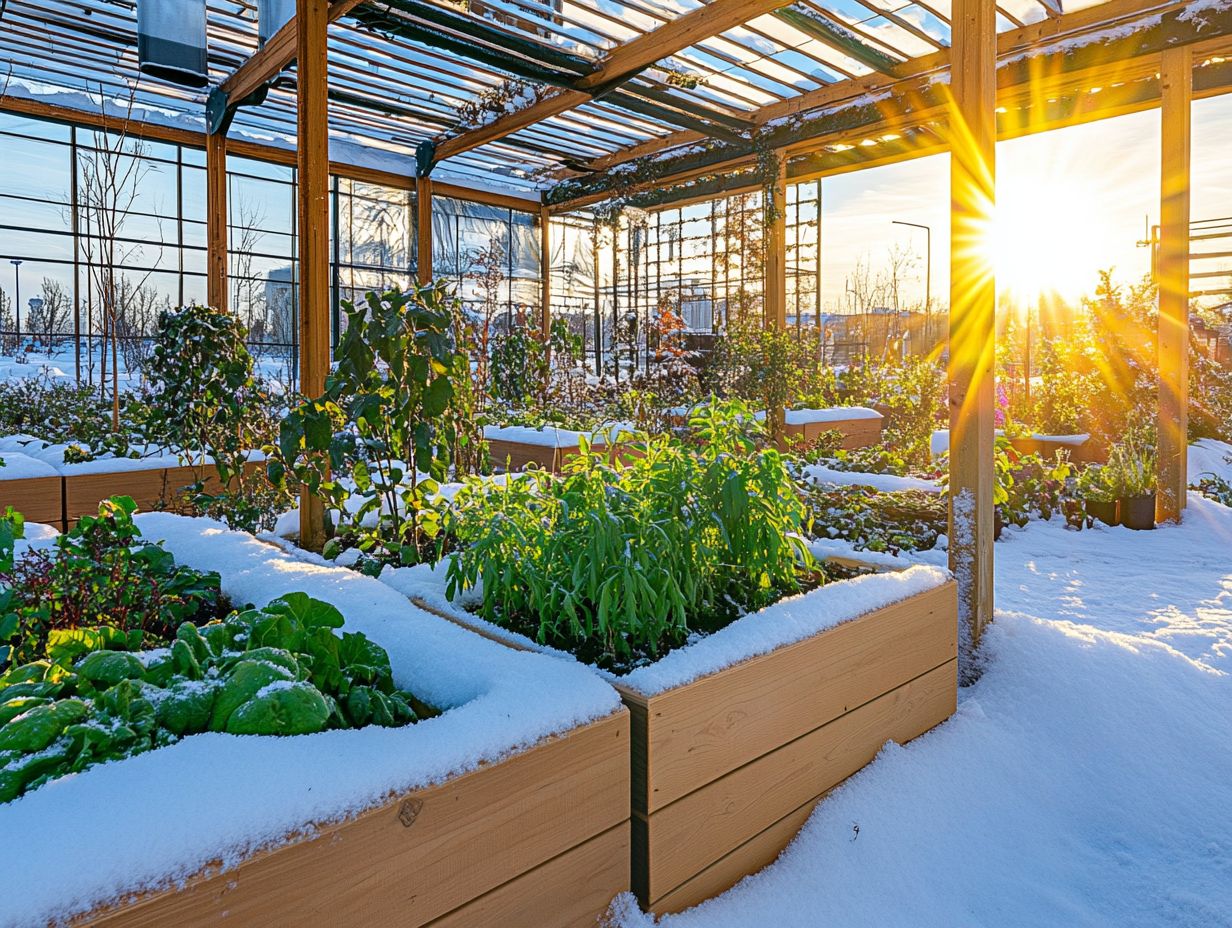
Creating sun traps is a brilliant strategy for ensuring your plants bask in adequate sunlight, especially in cold-climate gardening where every precious ray counts.
By designing sun traps with materials like rocks, wood, and soil, you reflect sunlight. This approach enhances growth rates, allowing for a diverse array of plants in colder climates.
The benefits are clear: you will see enhanced growth rates and healthier plants that thrive in temperatures that would otherwise stall their development. Utilizing these sun traps not only extends the growing season but also significantly boosts your yields, making this technique invaluable for anyone passionate about gardening in colder regions.
Alternative Solutions for Limited Sunlight
When you encounter limited sunlight in your garden, exploring alternative solutions becomes crucial, particularly for those interested in understanding microclimates in your cold garden.
Choosing shade-tolerant plants can transform your garden. They ensure your gardening endeavors yield rewarding results, even in lower light.
Using Artificial Lighting
If sunlight is limited, using artificial lighting can help your plants thrive in cold climates.
In these challenging environments, supplemental lighting becomes crucial to ensure your plants get the adequate light they need for photosynthesis, even during the shorter winter days. You have several types of lights to choose from, including fluorescent, LED, and powerful lights, each with its own unique advantages.
For example, LED lights are energy-efficient and have a long lifespan, making them a favorite for indoor setups. Fluorescent lamps are perfect for seedlings, offering a balanced spectrum of light.
By positioning these lights strategically and fine-tuning the duration of illumination, you can create optimal growth conditions that nurture vibrant foliage and bountiful harvests, effectively transforming your indoor space into a flourishing greenhouse.
Growing Shade-Tolerant Plants and Seasonal Interest Plants
Growing shade-tolerant plants is an excellent strategy if sunlight is at a premium in your garden, offering not just beauty but also resilience in colder climates.
These hardy varieties don t just survive under tree canopies; they breathe life into otherwise lackluster spaces. Take hostas, for example they provide lush foliage with an impressive array of colors and textures. Add ferns to the mix, and you ll introduce a soft, feathery elegance.
Shade-loving perennials like astilbe and bleeding heart create vibrant blooms that light up dark areas, transforming them into inviting retreats. Incorporating these plants enhances biodiversity, attracts pollinators, and helps mitigate erosion, making them a smart choice for sustainable gardening practices.
Frequently Asked Questions about local gardening experts

What are some ways to maximize sunlight in a cold-climate garden, considering frost dates?
There are a few different strategies you can try, such as using reflective materials, pruning nearby trees or structures, and choosing plants that can tolerate shade.
Start designing your sun traps today and watch your garden thrive!
How can reflective materials help to maximize sunlight in a garden, especially for vegetable growing season?
You can place reflective materials like mirrors or aluminum foil in your garden. This helps redirect sunlight to areas that need it most.
What types of plants are best for a cold-climate garden with limited sunlight, particularly kale-like vegetables?
Plants such as leafy greens, root vegetables, and some herbs thrive with less sunlight. Consider using shade-tolerant plants like hostas or ferns.
Is it necessary to prune trees or structures that may be casting shade on my garden, especially cottonwood trees?
If these structures significantly block sunlight, pruning them can be beneficial. Remember to research the best time and method for pruning to avoid harming the plants or trees.
Want to boost your garden with artificial lighting? Absolutely! Can I use special lights for plants to supplement sunlight in my cold-climate garden, especially when growing spinach?
Yes, you can use special lights for plants to supplement natural sunlight. Choose the right type of light for the plants you are growing.
Are there any other factors besides sunlight, such as soil insulation, that can affect plant growth in a cold-climate garden?
Temperature and soil quality are also crucial for plant growth. Soil insulation refers to materials that keep the soil warm. Be sure to choose plants that thrive in colder temperatures and add nutrients to your soil as needed.


